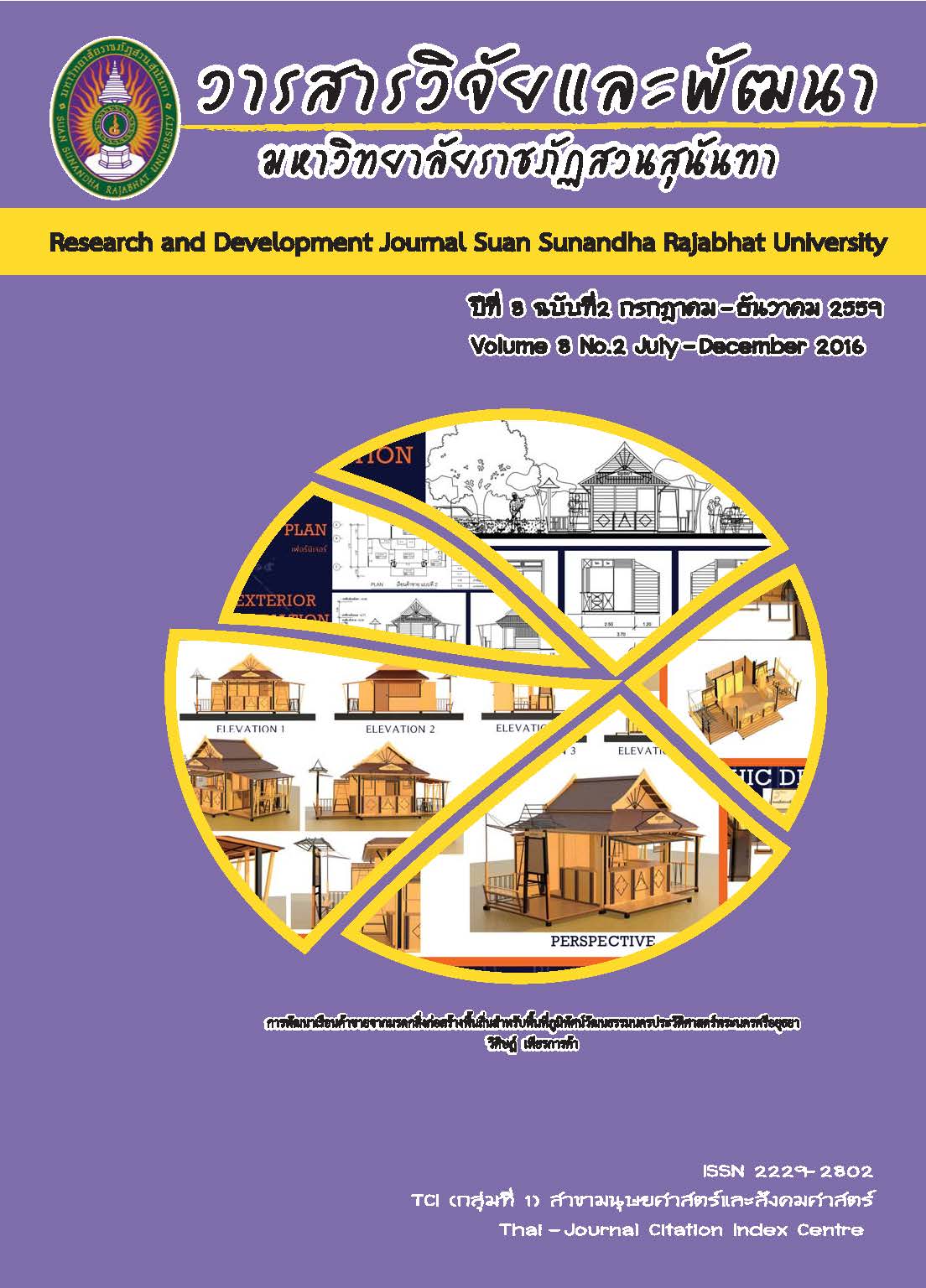ความสามารถในการเข้าใจความรู้สึกผู้อื่น ของนักเรียนชั้นมัธยมศึกษาตอนปลาย : การวิเคราะห์กลุ่มพหุ
DOI:
https://doi.org/10.53848/irdssru.v8i3.214566คำสำคัญ:
ความสามารถในการเข้าใจความรู้สึกผู้อื่น, การวิเคราะห์องค์ประกอบเชิงยืนยัน, การวิเคราะห์กลุ่มพหุ, นักเรียนชั้นมัธยมศึกษาตอนปลายบทคัดย่อ
การวิจัยนี้มีวัตถุประสงค์เพื่อพัฒนาแบบวัดความสามารถในการเข้าใจความรู้สึกผู้อื่น และวิเคราะห์องค์ประกอบเชิงยืนยันความสามารถในการเข้าใจความรู้สึกผู้อื่น พร้อมกับตรวจสอบความไม่แปรเปลี่ยนขององค์ประกอบเชิงยืนยันความสามารถในการเข้าใจความรู้สึกผู้อื่นระหว่างกลุ่มเพศชายกับเพศหญิงของนักเรียนชั้นมัธยมศึกษาตอนปลาย ใช้แบบวัดความสามารถในการเข้าใจความรู้สึกผู้อื่น เก็บข้อมูลจากกลุ่มตัวอย่างซึ่งเป็นนักเรียนชั้นมัธยมศึกษาตอนปลายในเขต พื้นที่การศึกษามัธยมศึกษา เขต 18 จานวน 800 คน ผลการวิจัย ปรากฏว่าแบบวัดความสามารถในการเข้าใจความรู้สึกผู้อื่น ประกอบด้วย 2 องค์ประกอบคือ 1) ความสามารถในการเข้าใจความรู้สึกผู้อื่น
ทางด้านความคิด และ 2) ความสามารถในการเข้าใจความรู้สึกผู้อื่นทางด้านอารมณ์ ขณะที่โมเดลองค์ประกอบมีความสอดคล้องกับข้อมูลเชิงประจักษ์โดยพิจารณาจากค่าสถิติไค-สแควร์ (2 ) เท่ากับ 100.62 ที่องศาอิสระ (df) 90 มีค่าความน่าจะเป็น (p) เท่ากับ 0.26 ค่า TLI เท่ากับ 0.99 ค่า CFI เท่ากับ 1.00 ค่า SRMR เท่ากับ 0.02 และค่า RMSEA เท่ากับ 0.01 นอกจากนี้โมเดลองค์ประกอบ เชิงยืนยันความสามารถในการเข้าใจความรู้สึกผู้อื่นระหว่างกลุ่มเพศชายกับกลุ่มเพศหญิง ไม่มี ความแปรเปลี่ยนของโมเดล
เอกสารอ้างอิง
access to a student's feeling for
high school teachers: a mixedmethods
research. Electronic
journal of education. 8(1), 1221-
1235. (in Thai).
Eisenberg, N. (2000). Empathy and
sympathy. In M. Lewis & J. M.
Haviland-Jones (Eds.), Handbook
of emotions (2nd ed.) (pp. 677-
691). New York: Guilford Press.
Jeamnakarin, P. (1996). Adolescent
development. Bangkok: Tonaor
Printing (in Thai).
Kanchanawasee, S. (2009). Theory of
Evaluation. (7thed). Bangkok:
Chulalongkorn University. (in Thai).
Lalida, B. (2014). A Confirmatory Factor
Analysis of Empathy in Lower
Secondary School Students.
Master of Science, Research
Methodology and Cognitive
Science, Burapha University (in
Thai).
Makmee, P. (2016). Development of A
Model of Public Organizational
Effectiveness Measurement in
ASEAN: Multilevel Structural
Equation Model Analysis. Journal
of the Association of Researchers.
21(1), 34- 48. (in Thai).
Pasee, A. (2011). Factors of influence
the Behaviour of the Adolescent
Aggression in the School Office,
District of Khon Kaen, 5.
Education of Doctoral in Research
Methodology Education,
Mahasarakham University. (in Thai).
Reabsuntea, S. (2000). The effect of
development program
understand the following
concepts Rogers towards the
reduction of aggressive behavior
among adolescent. Master of
Science, Counseling Psychology,
Graduate School, Chiang-Mai
University. (in Thai).
Renate, L. E. P., Corcoran, R., Drake, R.,
Shryane, N. M., & Vollm, B. A.,
(2011). The QCAE: A Questionnaire
of Cognitive and Affective Empathy.
Journal of Personality
Assessment, 93(1), 84–95.
Rogers, C.R. (1975). Empathic: An
unappreciated way of being. The
Counseling Psychologist, 5.
Retrieved August 15, 2009, from
Academic Search Complete.
Saiyod, L., & Saiyod, A. (2000).
Techniques for measuring
learning. (2nded). Bangkok:
Suweeriyasan. (in Thai).
Spinella, M. (2005). Prefrontal substrates
of empathy: psychometric
evidence in a healthy sample.
Biological Psychology, 70, 175–
181.
ดาวน์โหลด
เผยแพร่แล้ว
รูปแบบการอ้างอิง
ฉบับ
ประเภทบทความ
สัญญาอนุญาต
บทความที่ได้รับการตีพิมพ์เป็นลิขสิทธิ์ของ สถาบันวิจัยและพัฒนา มหาวิทยาลัยราชภัฎสวนสุนันทา
ข้อความที่ปรากฏในบทความแต่ละเรื่องในวารสารวิชาการเล่มนี้เป็นความคิดเห็นส่วนตัวของผู้เขียนแต่ละท่านไม่เกี่ยวข้องกับมหาวิทยาลัยราชภัฎสวนสุนันทา และคณาจารย์ท่านอื่นๆในมหาวิทยาลัยฯ แต่อย่างใด ความรับผิดชอบองค์ประกอบทั้งหมดของบทความแต่ละเรื่องเป็นของผู้เขียนแต่ละท่าน หากมีความผิดพลาดใดๆ ผู้เขียนแต่ละท่านจะรับผิดชอบบทความของตนเองแต่ผู้เดียว





